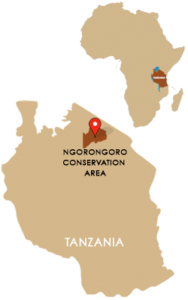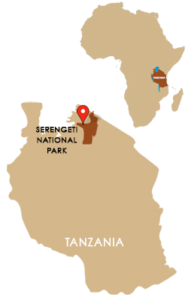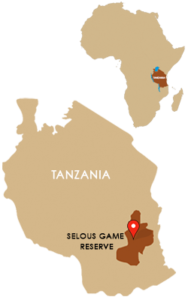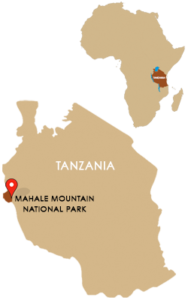Tanzania
Tanzania is a developing East African Nation noted for both its history of stability and its astounding natural beauty. Tanzania’s robust tourist industry provides all levels of tourist amenities, although higher-end facilities are concentrated mainly in the cities and selected game parks.
NGORONGORO CRATER
 Although it’s not technically a national park, The Ngorongoro Conservation Area was established to protect the area’s wildlife as well as the indigenous peoples that live there.
Although it’s not technically a national park, The Ngorongoro Conservation Area was established to protect the area’s wildlife as well as the indigenous peoples that live there.
The focal point of the area is the Ngorongoro Crater, one of Africa’s most unique sites. The crater itself was formed around 2 million years ago after a giant volcano collapsed, creating what’s called a caldera, the world’s largest in fact.
SERENGETI NATIONAL PARK
 Serengeti National Park – Tanzania‘s oldest and perhaps Africa’s most iconic and well known wildlife areas for safari, its name appropriately translates as “endless plains”, inspiring countless filmmakers, photographers, and authors over the years.
Serengeti National Park – Tanzania‘s oldest and perhaps Africa’s most iconic and well known wildlife areas for safari, its name appropriately translates as “endless plains”, inspiring countless filmmakers, photographers, and authors over the years.
Make sure that this is part of your Tanzanian Safari Vacation – Each year, over 1.5 million wildebeest (not to mention 200,00 zebra) make the treacherous annual Migration northwards into Kenya’s Masai Mara in search of fresh grazing.
SELOUS GAME RESERVE
 Tanzania’s Selous Game Reserve is one of the largest nature reserves in the world and takes its name from English explorer and conservationist Sir Frederick Selous. The area was designated a UNESCO World Heritage Site in 1982 due to the diversity of its wildlife and undisturbed nature.
Tanzania’s Selous Game Reserve is one of the largest nature reserves in the world and takes its name from English explorer and conservationist Sir Frederick Selous. The area was designated a UNESCO World Heritage Site in 1982 due to the diversity of its wildlife and undisturbed nature.
One third of all African wild dogs call Selous Game Reserve their home. Covering over 21,000 square miles, more than twice the size of the Kruger National Park, Selous Game Reserve is one of the largest wildlife sanctuaries anywhere.
LAKE TANGANYIKA
 Lake Tanganyika is one of Africa’s great lakes on the extreme west of Tanzania. It is 418 miles long and 45 miles at its maximum width.
Lake Tanganyika is one of Africa’s great lakes on the extreme west of Tanzania. It is 418 miles long and 45 miles at its maximum width.
Mahale Mountains National Park lies on the shores of Lake Tanganyika in Kigoma Region,Tanzania. Named after the Mahale The park is one of only two protected areas for chimpanzees in the country.
There are no roads or other infrastructure within the park boundaries, and the only way in and out of the park is via boat on the lake.
LAKE MANYARA
Standing high on the edge of a towering terracotta escarpment with panoramic views over the glittering alkaline waters of Lake Manyara, Lake Manyara Serena Safari Lodge offers a unique blend of safari opportunities, peace and tranquillity, wildlife discovery, and ornithological richness. The unprecedented range of high-adventure sports, meanwhile, include mountain biking, canoeing and forest walks, while cultural choices include tours of the neighbouring villages and dance displays by the local sukuma people.
RUAHA NATIONAL PARK
In 2008 the Usangu Game Reserve merged with Ruaha National Park making it the largest national park in Tanzania.
Named after the Great Ruaha River, the park is well known for its large elephant population as well as cheetah, lion, Cape buffalo, hippos, giraffe, wild dogs, occasional leopard sightings and sable antelope as well as the usual suspects – zebra, baboon, warthog etc.
TARANGIRE NATIONAL PARK
Tarangired is the 6th largest national Park in Tanzania and is one of the least visited parks due to its proximity to the Serengeti and the Ngorongoro Crater which is a shame as Tarangire has an amazing concentration of lion and elephant as well as huge herds of buffalo, wildebeest, zebra, cape buffalo, giraffe, monkeys, olive baboons, Grant’s gazelle, waterbuck and more.
The birdlife is prolific – more than 350 species making Tarangire very attractive to any “twitchers” out there!

